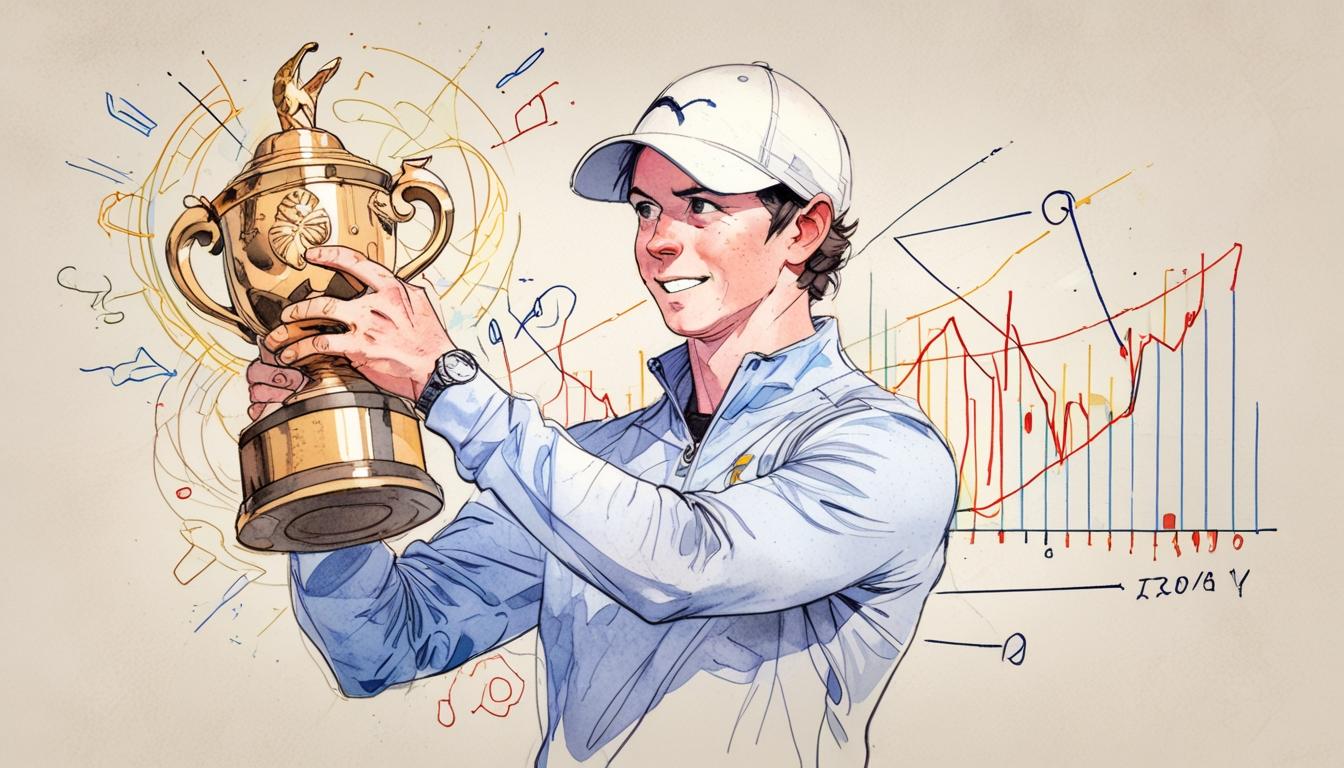From Golf Greens to Investment Scenes: The Rise of Sports Investment
In a paradigm shift reflecting the growing intersection between sports and finance, TPG has teamed up with golfer Rory McIlroy, his business partner Sean O’Flaherty, and Symphony Ventures to unveil TPG Sports. This newly minted entity aims to capitalise on the burgeoning market for sports investments, focusing on businesses across various teams and leagues. With McIlroy’s recent monumental achievement of completing a career Grand Slam at the Masters, his reputation is poised to attract even more attention to this venture.
The emergence of dedicated investment bodies within sports is not an isolated trend. Last year, JP Morgan established a sports investment banking team, following its involvement in Sir Jim Ratcliffe's minority stake acquisition of Manchester United. Moreover, Standard Chartered recently launched a sports investment fund tailored for affluent clients. The metamorphosis of sports from mere pastimes to lucrative investment opportunities underscores a burgeoning landscape for investors.
The Allure of Sports Investments
The appeal of investing in sports entities has grown significantly in the past few years. According to estimations from CNBC, the average NBA team now holds a staggering value of $4.66 billion, reflecting a 15% year-on-year increase. Similarly, NFL teams average $6.49 billion and NHL teams have surged to $1.92 billion, with year-on-year rises of 11% and an impressive 37%, respectively.
A study conducted by KLUTCH Sports Group and RBC solidified this narrative, highlighting that sports franchises have historically outperformed traditional asset classes such as equities and commodities. The resilience of these franchises, particularly during periods of economic turbulence like the COVID-19 pandemic, has further attracted minority stakeholders from various private firms and institutions. As North American leagues gradually open doors to private equity, involvement in established franchises is becoming an enticing prospect.
Data from the Ross-Arctos Sports Franchise Index (RASFI) illustrates the benefits enjoyed by those venturing into sports investments. Over five, ten, and twenty-year periods, sports assets have consistently outshone global equities and US equities, yielding increases of 14.4%, 15.2%, and 12.3%, respectively.
Investment firms are also exploring ancillary ventures within the sports sector, driven by rapid growth in sponsorships and lucrative media rights deals. This evolution has transformed the sports industry into a captivating focal point for investors willing to enter an increasingly competitive arena.
Shifting Dynamics in the Market
A recent Deloitte study indicates a dramatic rise in demand for sports investments, with European involvement increasing from 20% to 24% in 2023, although North American players still dominate, representing 55% of all investments. This diversity not only highlights the global appeal of sports but also opens up opportunities in untapped markets, where the potential for fresh investments is on the rise.
Soccer, in particular, has emerged as a focal point for investment. According to Deloitte’s 2025 Sports Investment Outlook, 2024 will see soccer transactions make up nearly half of all dealings involving sports rights-holders. Notably, only 16% of these transactions fall within Europe’s big five leagues: the Premier League, Bundesliga, La Liga, Serie A, and Ligue 1. Furthermore, projections suggest MLS will experience double-digit growth in sponsorship revenue by 2025, driven largely by its predominantly youthful and diverse fanbase.
Equally significant is the rise of motorsports, accounting for 8% of all deals done in 2024, a stark increase from 4% the previous year. Moreover, women’s sports, particularly leagues such as the WNBA and NWSL, are capturing significant investment interest.
A Future of Opportunity
The landscape of sports investment is broadening as investors increasingly look beyond traditional avenues. Emerging sports like Pickleball, golf, and e-sports present scalable media prospects and innovative sponsorship models, attracting investors seeking high-reward possibilities with comparatively lower entry costs.
As competition intensifies, the coming years will see sports business groups reassess the returns from early investments to strategically allocate resources for future endeavours. Deloitte's study highlighted a pivotal choice: investing in well-established sports or diversifying into emerging markets that carry higher risks and potential rewards. TPG's recent entry into the sector signals the dawn of a new era—one where sports investment is no fleeting trend, but rather a frontier teeming with opportunity.
The alignment of seasoned investors with leading athletes like McIlroy marks a new chapter wherein the realms of sports and finance are intricately intertwined, creating a compelling narrative set against a backdrop of rapid change in the global sports industry.
Reference Map:
- Paragraph 1 – [1]
- Paragraph 2 – [1], [4]
- Paragraph 3 – [1], [5]
- Paragraph 4 – [1], [6]
- Paragraph 5 – [1], [3]
- Paragraph 6 – [1], [2]
- Paragraph 7 – [1], [6]
- Paragraph 8 – [1], [4]
Source: Noah Wire Services
